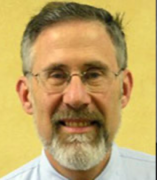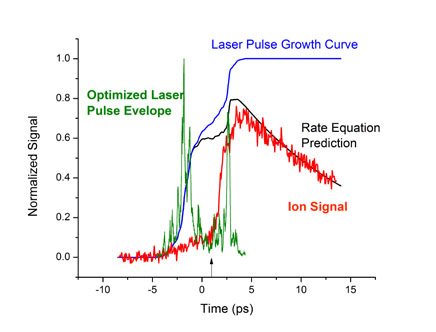
Robert Gordon
Emeritus Professor
Contact
Address:
4242 SES, MC 111
Office Phone:
Email:
Related Sites:
About
The focus of our research is on the use of lasers to control the behavior of matter. A primary example is the coherent phase control of chemical reactions. In the frequency domain, we utilized quantum mechanical interference between one- and three-photon excitation paths to control the branching between photodissociation and photoionization of molecules in a molecular beam.1 In the time domain, we used shaped femtosecond laser pulses to control the dynamics of electronically excited pyrazine.2 We used similar methods to induce coherent phonon excitation and to control the carrier dynamics in a gallium arsenide crystal,3 and we discovered a novel mechanism for energy transfer between lasers in a plasma.4 Applications of our research include ultrafast material processing,5 application of laser ablation to glaucoma surgery,6 and material analysis using laser-induced breakdown spectroscopy (LIBS).7
About

Controlling internal conversion with ultrashort laser pulses.1 A genetic algorithm is used to find a laser pulse that inhibits the UV ionization of pyrazine at T=1.0 ps. The red curve shows the parent ion at different pump/probe delays. The black curve is the predicted (and observed) ion signal for a transform limited pulse. The blue curve shows that although 70% of the photons have arrived by time T, very little ionization has occurred.
a

Coherent control of carriers in gallium arsenide produced by a train of three ultrashort laser pulses.2 The figures show an increase in photoluminescence when the pulses are separated by an integer multiple of the phonon period. The effect is caused by phonon-induced scattering of electrons and holes into the L-valley, where the carriers recombine.
a

The “Ghostbuster Effect,” showing the energy transfer between two focused femtosecond laser beams.3 In the upper panel the pulses to not overlap temporally, while in the lower panel the pulses collide, transferring energy from the donor to the acceptor beam. The effect is caused by stimulated Raman scattering mediated by the plasma produced at the crossing point of the lasers.
Selected Publications
- V. J. Barge, Z. Hu, J. Willig, and R. J. Gordon, “The Role of the Gouy Phase in the Coherent Phase Control of the Photoionization and Photodissociation of Vinyl Chloride,” Phys. Rev. Lett. 97, 263001 (2006).
- Z. Hu, S. Singha, and R. J. Gordon, “Controlling the Photoluminescence of Gallium Arsenide with Trains of Ultrashort Laser Pulses,” Phys. Rev. B 82, 115204 (2010).
- Z. Hu, S. Singha, Z. Hu, and R. J. Gordon, “Ablation of Materials with Dual Femtosecond Laser Pulses,” J. Appl. Phys. 104, 113520 [1-10] (2008).
- H. Nakamura, Y.Liu, T. E. Witt, D. P. Edward, and R. J. Gordon, “Femtosecond Laser Photodisruption of Primate Trabecular Meshwork: An Ex Vivo Study,” Investig. Ophth. Vis. Sci. 50, 1198-1204 (2009).
- Y. Liu, S. Singha, T. E. Witt, and R. J. Gordon, “Observation of Nearly Total Polarization in the Ultrafast Laser Ablation of Si,” Appl. Phys. Lett. 93, 161502 [1-3] (2008).
- Y. Zhao, T. E. Witt, and R. J. Gordon, “Efficient Energy Transfer between Laser Beams by Stimulated Raman Scattering,” Physical Review Letters 103, 173903 [1-4], 2009.
Education
AB, Harvard University, 1965
PhD, Harvard University, 1970
Postdoctoral Fellow, California Institute of Technology, 1970-1972
Postdoctoral Fellow, Naval Research Laboratory, 1972-73
Visiting Scholar, Stanford University, 1980-1981
Visiting Professor, Hokkaido University, Japan, 1992
Visiting Professor, Department of Physics, University of Michigan, 1995-1996
Visiting Professor, Department of Chemical Physics, Weizmann Institute of Science, 2011. University of Illinois Fellow, 1992-1995
Fellow of the American Physical Society, 1996
Fellow of the American Association for the Advancement of Science, 2003
Secretary-Treasurer of the Division of Chemical Physics, American Physical Society, 2013-2016